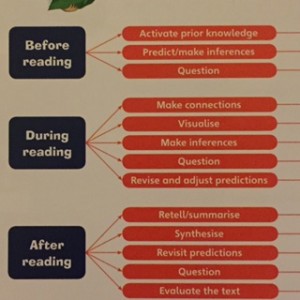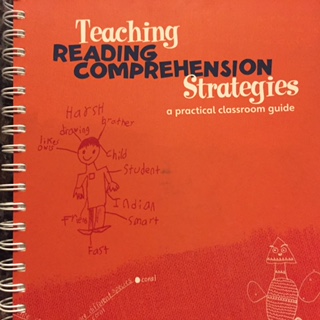Since beginning my blogs, I have had several colleagues recommend the work of Sheena Cameron. As I have focused on comprehension in the last few blogs, it was timely to look at Cameron’s text Teaching Reading Comprehension Strategies a practical classroom guide. Luckily, one of my work colleagues had a copy of Cameron’s book and I have spent the afternoon skimming and scanning her text. Her book is easy to read and very practical with lots of resources.
Cameron is an experienced classroom teacher and her book reflects this experience and current research. Her introduction acknowledges the importance of comprehension and the strategies that active readers use when engaging with text. Like many articles and texts on the teaching of reading, these active strategies used by good readers are divided into three stages of reading – before, during and after.
Cameron identifies a number of reading comprehension strategies and has organised them into groups: nine key strategies that often appear in research; two strategies that are important but receive less recognition; and two additional strategy sets that are indispensable to readers at any level.
Group 1 – Key strategies
- activating prior knowledge

From Cameron, S. Teaching Reading Comprehension Strategies (2009) p 11
- self-monitoring
- predicting
- questioning
- making connections
- visualising
- inferring
- summarising
- synthesising
Group 2 – Other useful strategies
- skimming
- scanning
Group 3 – Additional strategy sets
- word attack strategies
- fix-up strategies
(Cameron, 2009, p9)
I really like how these strategies align quite nicely with those recommended in the elaborations of year 4 Australian Curriculum English (ACELY1692).
Cameron states that reading comprehension can be developed by: teaching the strategies explicitly; using a cooperative learning model; using the strategies flexibly and combining them; using the strategies across all learning areas; and building vocabulary knowledge.
She summarises her introduction by stating that a reader is not truly reading without comprehension; that the strategies are a method of helping students understand what they are reading; and that good comprehension enables purposeful and active reading.
I am very impressed with this text and intend to purchase a personal copy – a recommended read!

